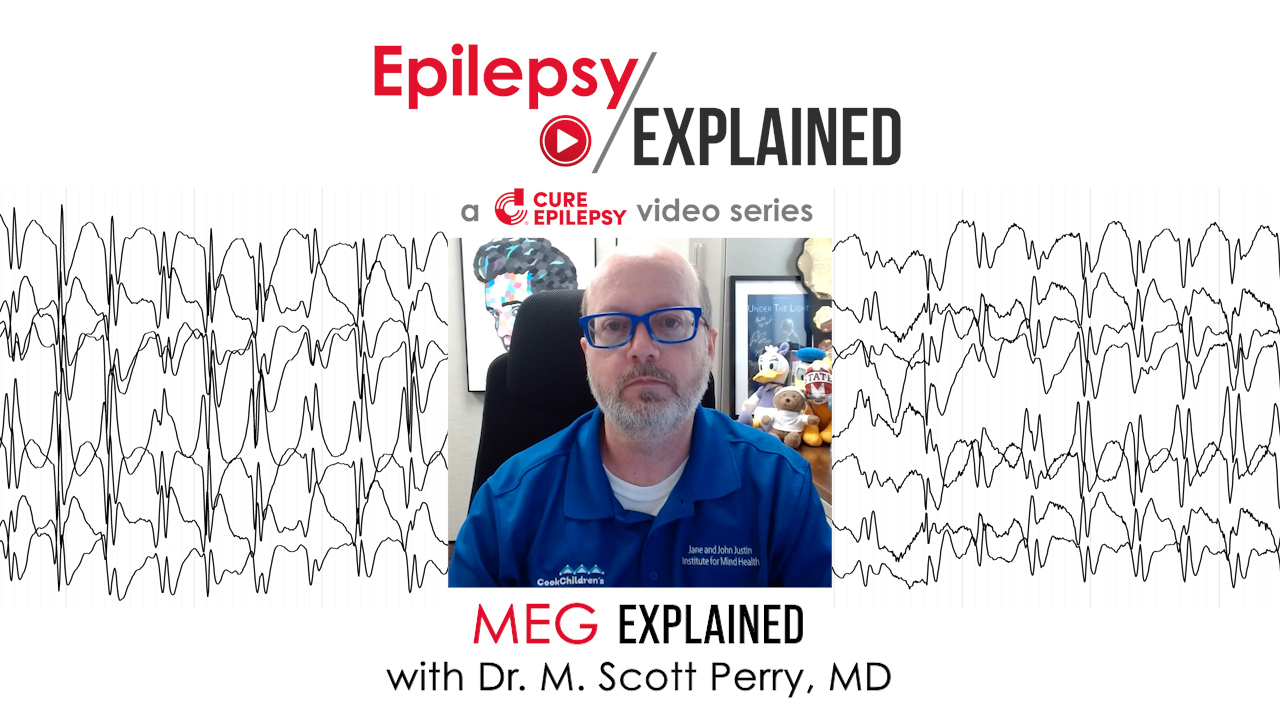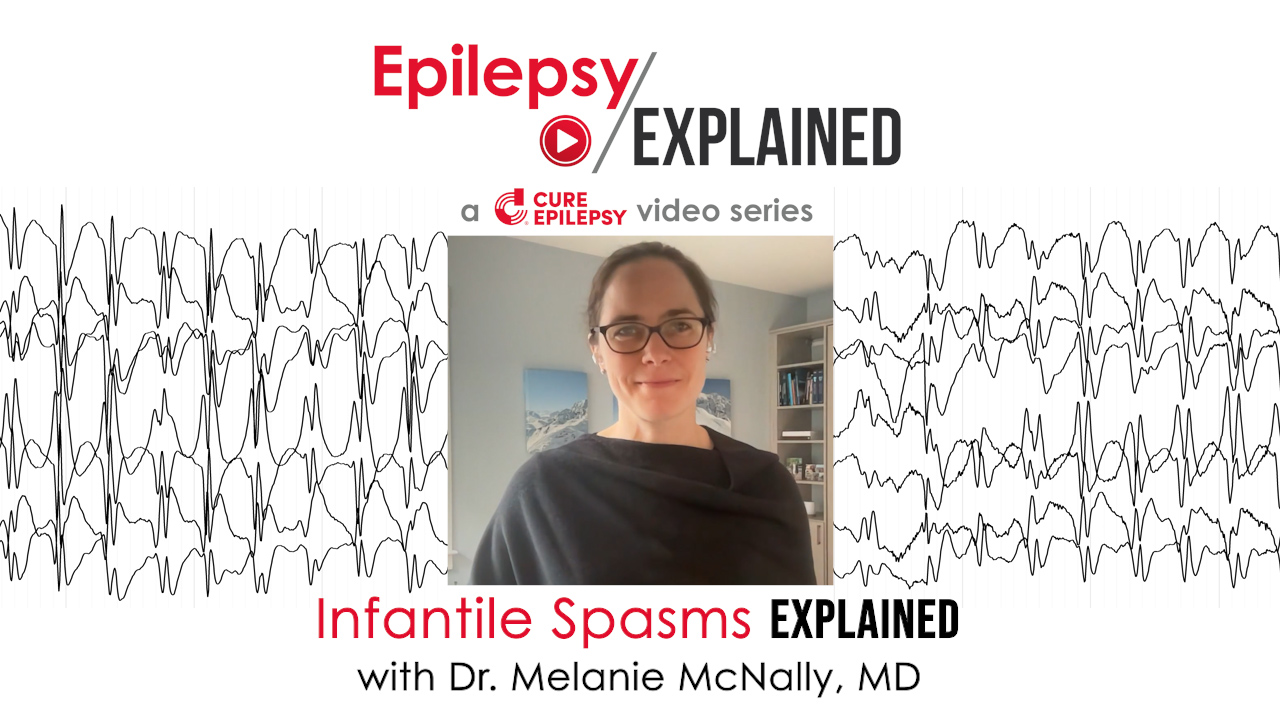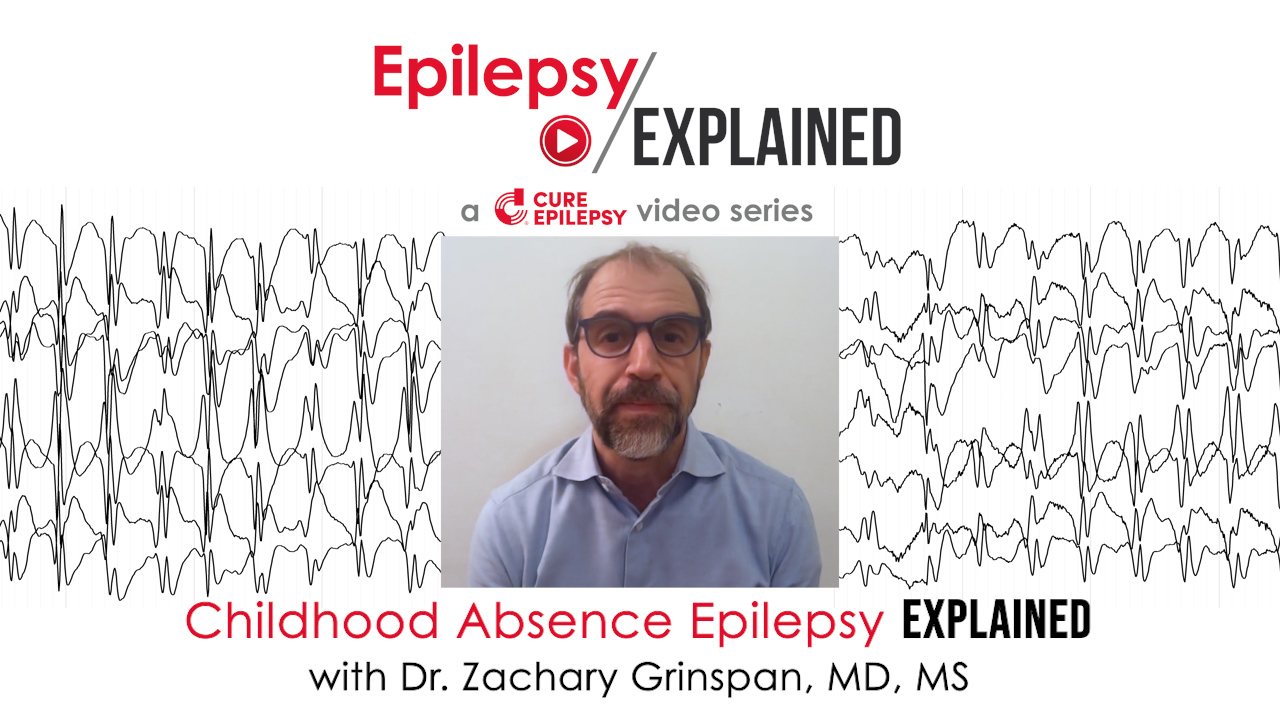What is MEG and how can it benefit those living with epilepsy?
This month on Epilepsy Explained Dr. M. Scott Perry returns to the videocast to answer your questions about MEG, or Magnetoencephalography, the imaging technique that measures magnetic fields in the brain. Dr Perry, Head of Neurosciences at the Jane and John Justin Institute for Mind Health at Cook Children’s Hospital in Fort Worth, Texas, explains MEG, discusses how it can be beneficial to people living with epilepsy, and answers the following questions.
0:15 What is MEG and what does it do?
1:40 How does MEG differ from MRI and EEG?
2:43 Is a MEG scan better than an EEG scan?
4:05 What is the value of MEG for those living with epilepsy, and who could benefit from having a MEG scan?
6:04 Is MEG widely available, and how can I get a MEG scan?
7:15 What preparations are required for a MEG scan, and what can I expect when undergoing a MEG procedure?
9:43 How long does a MEG scan usually take?
10:51 Are MEG scan results immediately available or is there a wait time for results?
11:49 If I’ve had a MEG scan before could there be a reason for me to have another MEG scan in the future?
13:25 I’ve heard that MEG scans can be expensive, does insurance usually cover MEG?
Look for new episodes of Epilepsy Explained on the third Wednesday of every month here on our website and on CURE Epilepsy’s YouTube Channel.
Submit questions for future episodes of Epilepsy Explained here.
Episode Transcript
What is MEG and what does it do?
Dr. M. Scott Perry:
MEG, or magnetoencephalography. Basically it’s a different way to look at the way that the brain functions. Okay, so I think the easiest way to explain it, if you think about EEG, which we’re all used to. That measures electrical fields and the way that the neurons or electricity is going between the neurons. And the thing about electrical fields is that as they leave and they go through the skull or the skin or muscle and things like that, before they get out to those EEG leads, they can kind of be dispersed or they can change. If you took physics class, you might’ve remembered that every electrical field also has a magnetic field that is perpendicular to it. We used to learn this little symbol in physics where the magnetic field is always perpendicular to the electrical field.
And so anytime these neurons are generating electrical fields, they’re also generating magnetic fields. And so what a MEG is basically all these sensors that are detecting that magnetic field that is coming from those communications between the neurons. And what’s great about that is that magnetic fields don’t change when they go through supplicates. So those magnetic fields out here look the same as they do at the brain level, and that actually allows for a different way to kind of map out where stuff is coming from in the brain.
How does MEG differ from MRI and EEG?
Dr. M. Scott Perry:
So with respect to an EEG, the way it differs is really mainly the thing it measures. So as I said before, EEG is measuring electrical potentials, electrical fields, whereas MEG is measuring magnetic fields. And as I indicated, there’s a difference between those and there’s some benefits, pros and cons to each of them. The pros in MEG being that magnetic fields are not altered by intervening surfaces. So all the places that magnetic field goes through is not changed the way the magnetic field looks. And so it can really help in more sometimes precise localization of where things come from. Now, an MRI is really an anatomical study, which means it is showing us the structure of the brain. It’s showing us how the brain is put together, are the parts there, are the parts made correctly, whereas a MEG is showing us how are those parts working? It’s a functional study. What are they doing?
Is a MEG scan better than an EEG scan?
Dr. M. Scott Perry:
MEG is not better than EEG, and EEG is not better than MEG. They are complementary types of testing. They both have benefits to localizing where things are coming from and they have strengths and weaknesses and they have to be… When they’re used, they’re used often together to form the solution of where the seizures are coming from. There’s certain things that MEG can do better. As we talked about earlier, localizing in space and where something is very precisely MEG might be better at. With regards to localizing in time, EEG and MEG might be maybe more similar. There’s certain things that MEG can see well and certain things that EEG can see better.
So for example, if the area of onset is at top of the brain and pointing directly towards the sensors of a MEG, a MEG may not be able to see that very well, but if it’s down in the curves of the brain and pointing the other direction, it may be able to see it better. So that’s a place where both MEG and EEG can be used together to help with localization. So definitely one is not better than the other. They’re both important tools to use to help localize brain activity. And oftentimes together they can help give you good answers.
What is the value of MEG for those living with epilepsy, and who could benefit from having a MEG scan?
Dr. M. Scott Perry:
So MEG, its value is it’s another way to localize where seizures are coming from. It has some advantages. It has very good spatial resolution. And what I mean by that is that its ability to detect wear in the brain and kind of within millimeters of preciseness of wear is very good, as well as its temporal abilities or being able to see when something is happening in time, it is able to measure better. So as a result, there are a few I guess examples of where someone with epilepsy may benefit. So for example, you’ve had an EEG and you’re trying to figure out where in the brain it comes from and EEG has shown you that, but it’s a kind of a large region. Maybe it’s a large region in one hemisphere, or maybe it even looks like it’s in both hemispheres or it’s more generalized.
MEG may be able to show that it’s actually a much smaller area that’s generating what we see on the EEG. Another example might be a person who has epilepsy and their EEGs are normal. And the reason those EEGs may be normal is maybe the place where the seizure is starting is maybe deep in the brain. And as I discussed earlier about electrical fields, if those electrical fields are being generated deep in the brain, as they come through the brain and the skull and everything out to the EEG, sometimes they may get dispersed and lost and maybe not seen very well on the EEG, but the MEG may be able to see it better.
So sometimes you see people who’ve had normal EEGs who actually have abnormalities found on the MEG that we didn’t see on the EEG. The other place where MEG can be valuable is in functional mapping. So just like you can do a functional MRI to find out which part of the brain controls language or vision or motor, you can do the same kinds of things with MEG. So it’s another way to be able map out those critical areas and how closely they’re located where seizures come from.
Is MEG widely available, and how can I get a MEG scan?
Dr. M. Scott Perry:
The first answer is MEG is not widely available. There are much less places where you can get a MEG done then, for instance, an EEG or an MRI. So it is really at some specialized centers, and that’s really just because of the infrastructure it needs to have a MEG and the kind of people you need to do the analysis of the data and that kind of stuff. So as far as how you can get one, I mean, you get one first of all, if you need one, obviously that’s a conversation with your provider about whether you need one. We often are using it in circumstances where we might be planning epilepsy surgery and we’re trying to get more precise localization. And so it’s useful in that case. That’s probably the most common case. Not everyone needs a MEG. If your EEG is given the answers necessary, you don’t necessarily need a MEG. But if you’re really needing more precise localization, that’s probably where it’s most commonly used.
What preparations are required for a MEG scan, and what can I expect when undergoing a MEG procedure?
Dr. M. Scott Perry:
So these are some unique things about MEG that people should be aware of and many people aren’t aware of in considering getting prepped for one. So first of all, doing a MEG is kind of like doing an EEG. You’re going to go, you’re going to sit somewhere and we’re going to record activity of your brain, but it’s about the way we record it that is why it’s important you get prepped. So these machines pick up magnetic fields and they pick up magnetic fields that are incredibly small. And as a result, we have to try to reduce every single thing we can that generates magnetic fields so that the only magnetic fields we’re seeing are the ones coming from your brain. And so first of all, you’ll find when you go from MEG that this machine is in a special room. It kind of looks like a bank vault because it is a specially built shielded room with very thick walls to try to keep the magnetic field of the earth out of the room because the machine can pick that up.
And then as far as being prepped, some common things that people don’t think about, you can’t wear makeup. Why is that? Makeup and hair dyes, for example, red hair dye has iron in it. Iron generates magnetic fields. Many eye things like makeup will have glitter in it. And those pieces of little metal have magnetic fields associated with them. And so you go in with all those, your shirts that might have glitter on them or snaps, no metal. We take that out, going to generate magnetic fields. So you’ll get instructions from the MEG lab about these are the things you can wear, these are the things you don’t wear. That’s probably the biggest thing. The other thing is that you got to be still, so when you’re in… Unlike an MRI or an EEG where you can move around, it’s kind of like an MRI.
You got to be really, really still because the sensors are trying to pick up that information, and we need it to be picking up that information from the same place, so we don’t need you moving around. And then when you go in, you’ll be sitting in the machine. It kind of looks like if you think of a hairdryer and the old hair salons that’ll come down over your head and you’re sitting in this helmet and it’s basically you’re sitting there and it’s just recording brain activity. And then they may ask you to do certain things like tap your finger or they may like puffs of air so you can have sensation. And that’s how they’re mapping out motor and sensory and things like that.
How long does a MEG scan usually take?
Dr. M. Scott Perry:
Yeah, on average MEG scan probably takes maybe a few hours. And that’s really like going in, getting prepped, getting in the machine, doing the recording and getting finished. Just like the steps of an EEG, the total duration will really depend on what are your goals of the MEG. So if you’re just recording brain activity, that’s it, versus are you doing that plus you want to do some mapping. You’re trying to do language or motor or vision mapping. In rare cases, let’s say people might be trying to capture a seizure. We rarely put a person in a MEG in the hopes of capturing a seizure, but sometimes that’s the case. We may record longer if your EEG typically is you have abnormalities, but they’re really Infrequent on the EEG. So we may record a longer time in hopes of capturing that abnormality in between seizures. So a lot of things may play into it, but like I said, average duration probably one or two hours maybe.
Are MEG scan results immediately available or is there a wait time for results?
Dr. M. Scott Perry:
So MEG data is available to the people who do the analysis right away, but the actual results will take time. So unlike an EEG, unlike an MRI, some of the other studies we do, you can expect a MEG is on average probably going to take a few weeks at least to get results. And the reason for that is because it really does take a lot of data analysis and mathematical work in the background to get to the results. Because basically what they’re doing is they take these magnetic fields and kind of mathematically back calculate where the electrical field was that generated the magnetic field. And that really takes a specialized team of people that know how to do this and a lot of data crunching. And so you can expect it will take weeks before you get the results back.
If I’ve had a MEG scan before could there be a reason for me to have another MEG scan in the future?
Dr. M. Scott Perry:
There might be, I guess, a few times I can think about, for example, technology changes. So the way we do the analysis or remove artifact from the data, et cetera, that may change over time. So that would be a conversation to have with your provider. Has the technology changed such that maybe the analysis would be different and offer something else? In that case, you may or may not need to do the MEG again, maybe you could use the old data and analyze it again, or maybe the MEG machine is better, maybe it’s got more sensors, something’s changed that way that you would want to do it again. So certainly some circumstances there. Another instance may be, for instance, maybe you’re a really young child and your first MEG was done in a sedated state, so they had to sedate you in order to get you to be still enough to do it.
And when you sedate a person, you can sometimes change the way the brain is acting. So maybe if now you’re older and able to sit still on your own, maybe you might get something that you didn’t see before. Perhaps you’re having more frequent seizures and they didn’t capture a seizure during the MEG before and they want to capture a seizure in a MEG, that might be another time to do it. Honestly, we don’t usually do MEGs with the intent of capturing a seizure. That would be pretty unusual, but potentially a situation where you would do it. There may be some other situations, but it’s like with all tests, it’s always worth asking has something changed significantly that repeating the test now might show something that it didn’t show before.
I’ve heard that MEG scans can be expensive, does insurance usually cover MEG?
Dr. M. Scott Perry:
So that’s true. In general, MEG is going to be more expensive than an EEG or an MRI. As I said before, that’s because it takes a specialized center, specialized room. The resource, it’s very resource heavy, and so it is going to cost more. But I mean, that being said, it is covered by insurance. I’m not going to say that you might not run into some circumstances where it’s denied and you have to appeal and have a good reason for getting the MEG, but they can be covered by insurance for sure. So it’s worth considering.









